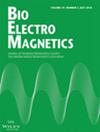Alberto Najera, Alvaro Villaescusa-Tebar, Jesus Gonzalez-Rubio, Concepcion Garcia-Pardo
下载PDF
{"title":"5G射频电磁场暴露的双重评估和空间分析:理论外推和直接测量","authors":"Alberto Najera, Alvaro Villaescusa-Tebar, Jesus Gonzalez-Rubio, Concepcion Garcia-Pardo","doi":"10.1002/bem.70020","DOIUrl":null,"url":null,"abstract":"<p>This study evaluates radiofrequency electromagnetic field (RF-EMF) exposure in 5G networks using a dual approach that combines theoretical extrapolations and direct measurements in diverse semiurban and urban environments, specifically on the campus of the Polytechnic University of Valencia. Measurements were conducted using personal exposimeters under active traffic conditions on the 5G network, complemented by a code-selective measurement system based on an R&S TSME6 scanner. This approach enabled the calculation of maximum theoretical exposure by detailed analysis of 5G signals and the capture of key parameters such as cell ID and beam indices at 16 representative points across the campus. For precise spatial visualization, Kriging interpolation techniques in ArcGIS were employed to generate continuous exposure maps illustrating the spatial distribution of RF-EMF in the study area. The results indicate that both the extrapolated theoretical values and measured levels align with the limits recommended by the ICNIRP, even under high data demand scenarios, supporting current safety assessments of 5G infrastructure regarding electromagnetic exposure. The correlation between theoretical and instantaneous exposures validates the applied methodology and its effectiveness in assessing exposure in diverse environments. This study provides a robust framework for future research and highlights the importance of continuous monitoring to ensure public safety during the deployment of new telecommunications infrastructure in urban areas. Bioelectromagnetics. 00:00–00, 2025. © 2025 Bioelectromagnetics Society.</p>","PeriodicalId":8956,"journal":{"name":"Bioelectromagnetics","volume":"46 6","pages":""},"PeriodicalIF":1.2000,"publicationDate":"2025-08-20","publicationTypes":"Journal Article","fieldsOfStudy":null,"isOpenAccess":false,"openAccessPdf":"https://onlinelibrary.wiley.com/doi/epdf/10.1002/bem.70020","citationCount":"0","resultStr":"{\"title\":\"Dual Evaluation and Spatial Analysis of RF-EMF Exposure in 5G: Theoretical Extrapolations and Direct Measurements\",\"authors\":\"Alberto Najera, Alvaro Villaescusa-Tebar, Jesus Gonzalez-Rubio, Concepcion Garcia-Pardo\",\"doi\":\"10.1002/bem.70020\",\"DOIUrl\":null,\"url\":null,\"abstract\":\"<p>This study evaluates radiofrequency electromagnetic field (RF-EMF) exposure in 5G networks using a dual approach that combines theoretical extrapolations and direct measurements in diverse semiurban and urban environments, specifically on the campus of the Polytechnic University of Valencia. Measurements were conducted using personal exposimeters under active traffic conditions on the 5G network, complemented by a code-selective measurement system based on an R&S TSME6 scanner. This approach enabled the calculation of maximum theoretical exposure by detailed analysis of 5G signals and the capture of key parameters such as cell ID and beam indices at 16 representative points across the campus. For precise spatial visualization, Kriging interpolation techniques in ArcGIS were employed to generate continuous exposure maps illustrating the spatial distribution of RF-EMF in the study area. The results indicate that both the extrapolated theoretical values and measured levels align with the limits recommended by the ICNIRP, even under high data demand scenarios, supporting current safety assessments of 5G infrastructure regarding electromagnetic exposure. The correlation between theoretical and instantaneous exposures validates the applied methodology and its effectiveness in assessing exposure in diverse environments. This study provides a robust framework for future research and highlights the importance of continuous monitoring to ensure public safety during the deployment of new telecommunications infrastructure in urban areas. Bioelectromagnetics. 00:00–00, 2025. © 2025 Bioelectromagnetics Society.</p>\",\"PeriodicalId\":8956,\"journal\":{\"name\":\"Bioelectromagnetics\",\"volume\":\"46 6\",\"pages\":\"\"},\"PeriodicalIF\":1.2000,\"publicationDate\":\"2025-08-20\",\"publicationTypes\":\"Journal Article\",\"fieldsOfStudy\":null,\"isOpenAccess\":false,\"openAccessPdf\":\"https://onlinelibrary.wiley.com/doi/epdf/10.1002/bem.70020\",\"citationCount\":\"0\",\"resultStr\":null,\"platform\":\"Semanticscholar\",\"paperid\":null,\"PeriodicalName\":\"Bioelectromagnetics\",\"FirstCategoryId\":\"99\",\"ListUrlMain\":\"https://onlinelibrary.wiley.com/doi/10.1002/bem.70020\",\"RegionNum\":3,\"RegionCategory\":\"生物学\",\"ArticlePicture\":[],\"TitleCN\":null,\"AbstractTextCN\":null,\"PMCID\":null,\"EPubDate\":\"\",\"PubModel\":\"\",\"JCR\":\"Q3\",\"JCRName\":\"BIOLOGY\",\"Score\":null,\"Total\":0}","platform":"Semanticscholar","paperid":null,"PeriodicalName":"Bioelectromagnetics","FirstCategoryId":"99","ListUrlMain":"https://onlinelibrary.wiley.com/doi/10.1002/bem.70020","RegionNum":3,"RegionCategory":"生物学","ArticlePicture":[],"TitleCN":null,"AbstractTextCN":null,"PMCID":null,"EPubDate":"","PubModel":"","JCR":"Q3","JCRName":"BIOLOGY","Score":null,"Total":0}
引用次数: 0
引用
批量引用


 求助内容:
求助内容: 应助结果提醒方式:
应助结果提醒方式:


